
In-Depth: Political climate heats up in Uttar Pradesh as clock ticks on 2022 Assembly polls

In-Depth: Political climate heats up in Uttar Pradesh as clock ticks on 2022 Assembly polls
With the crucial 2022 Uttar Pradesh Assembly polls only a few months away, the politically most significant state of India has started witnessing the gradual build-up of the election scene and raking up of political dust. The dust would only increase with the beginning of political campaigning and reach its peak in the final days to culminate with the voting.
Uttar Pradesh, which has the highest number of assembly constituencies in India at 403, is currently ruled by the Bharatiya Janata Party (BJP) that has 315 seats in its kitty. Of these, the saffron party holds 306 seats and its ally Apna Dal (Sonelal) rules the remaining nine seats.
As the state is gearing up to elect a fresh Assembly, the stage has been set for an interesting ballot battle where the incumbent Yogi Adityanath-led government will try to retain power, while the Opposition parties will make all possible efforts to rule the country’s biggest and politically important state.
The two important parties, which are eyeing power in UP are Samajwadi Party (SP) and Bahujan Samaj Party (BSP). Besides, the Congress with Priyanka Gandhi Vadra in lead is also up to contest in the country’s most complex political battleground. Aam Aadmi Party (AAP) and All India Majlis-e-Ittehadul Muslimeen (AIMIM) are also looking to increase their clout in the state. There are some other national and regional parties, which are contesting in the state with or without alliances. Before talking about the present situation of the political parties in the fray, their election strategies, major issues to be raised in hustings, and predictions for the poll result, let’s look at the political history of UP.
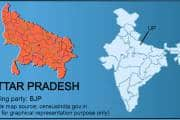 (Image: Moneycontrol)
(Image: Moneycontrol)The political stint of UP started in 1950s and, interestingly, no chief minister had completed his/her full term in office before 2012 Assembly elections. After forming government in the state in 2007, BSP chief Mayawati became the first chief minister to rule for complete five years. She was followed by the SP’s Akhilesh Yadav, who also completed his full term as the CM, and the BJP’s Yogi Adityanath is on the way to becoming the third one to do so.
Talking about the details of the UP politics since independence, it closely resembles the politics of India. It can be broadly classified into five phases: 1950-67, 1967-88, 1988-2007, and 2007-2017, 2017 to present.
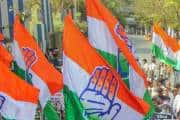 Representative image
Representative imageThis first phase was characterised by the dominance of the Congress. Govind Ballabh Pant was sworn in as the first chief minister of the state. But, in less than three years, Pant was incorporated into the Union cabinet and Varanasi-based Sanskrit scholar Sampurnand became the next CM. He continued in office for over five years but his term was divided between first and second Assembly. After Congress won the 1957 state elections, Sampurnanand stayed on as CM but only until 1960 when, following problems created by Kamlapati Tripathi, he had to make way for Chandrabhanu Gupta. Sucheta Kriplani, the wife of Acharya JB Kriplani, replaced Gupta in 1963, and became the first woman CM of the state.
1967-88: First non-Congress government, Janata experiment and moreThe second phase heralded the advent of significant opposition to the Congress in the state, associated with the rise of a wide array of parties claiming to represent agrarian interests, and comprising primarily of Other Backward Classes (OBCs).
The changing of CMs saw Congress tally dropping to 199, falling short of majority in the 425-seat Assembly. Jat leader Chaudhary Charan Singh won the Chhaproli seat by over 52,000 votes, and then broke with the Congress to form his Bhartiya Kranti Dal (BKD). The Bharatiya Jana Sangh (BJS), the precursor to the BJP, won 98 seats in the polls. Following this, an alliance was stitched namely Samyukta Vidhayak Dal (SVD), a coalition ranging from CPI(M) on the left to BJS on the right, with the Republican Party of India, Swatantra Party, Praja Socialist Party and 22 Independents in between, which put Charan Singh on the chair of Chief Minister.
However, his government lasted less than one year and the Assembly was dissolved after one year of President's Rule in 1969.
In 1969, elections were held again and the BKD won 98 seats and Jana Sangh, 49. Congress won 211 seats in the 425-member House, and Chandrabhanu Gupta returned as CM.
In the next eight years, Uttar Pradesh saw four stints of President's Rule and six Chief Ministers.
The period of 1977 to 1980 marked as the Janata Party experiment. In the elections, held after the national emergency was withdrawn in 1977, the Janata Party won 352 of 425 Assembly seats in Uttar Pradesh but a fight for the chief ministership broke out between Chandra Shekhar and Charan Singh. Finally, Ram Naresh Yadav was made the CM. However, Yadav had to resign in the wake of the infamous Narayanpur (Deoria) case of police atrocities and was succeeded by Banarasi Das. Janata experiment failed in three years. In February 1980, Indira Gandhi stormed back to power and sacked the Janata government. In the next eight years, the state saw six CMs.
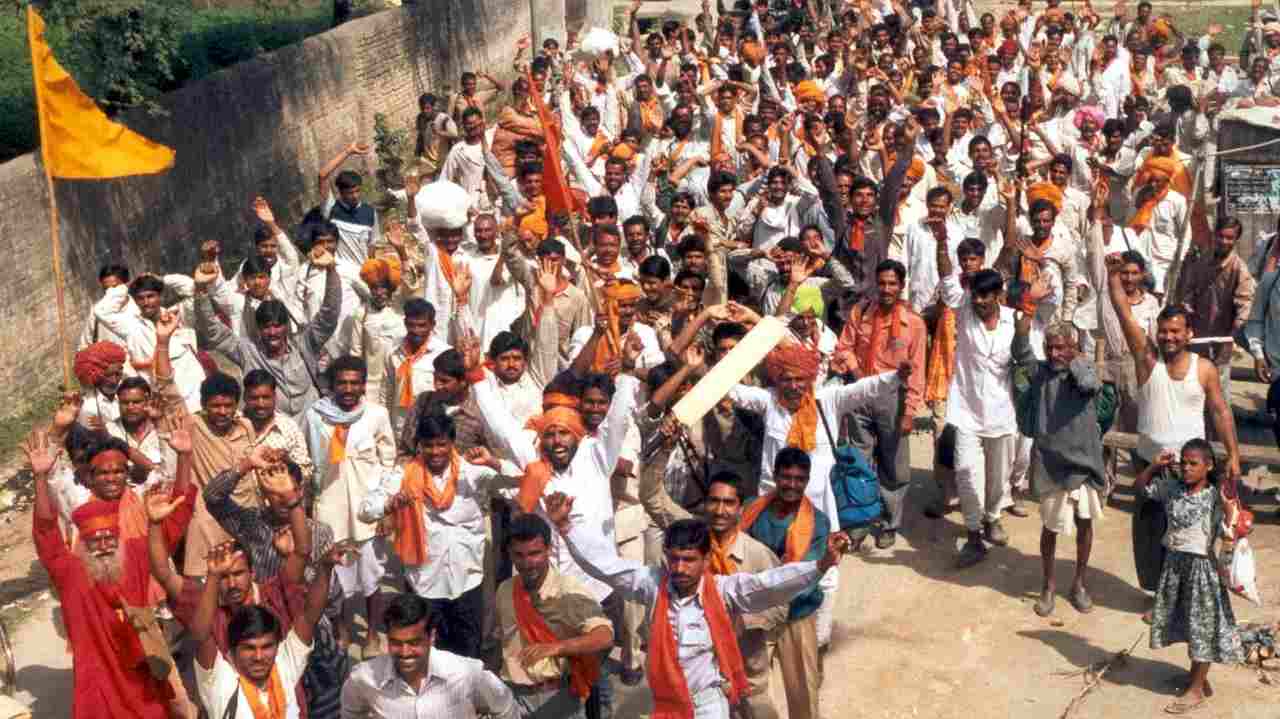 Hindu devotees raise their arms in support of Ram Mandir, while shouting slogans in a street in the city of Ayodhya in Uttar Pradesh on February 28, 2002. (Image: Reuters)
Hindu devotees raise their arms in support of Ram Mandir, while shouting slogans in a street in the city of Ayodhya in Uttar Pradesh on February 28, 2002. (Image: Reuters)
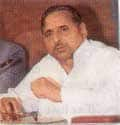
The third phase witnessed the ascendance of Hindu nationalism, represented in the rise, consolidation and concomitant decline of the BJP in the state, and the emergence and consolidation of backward caste and lower caste parties— the SP and the BSP.
In the 1989 elections, VP Singh's Janata Dal emerged as the single largest party, winning 208 seats and formed the government with the outside help from the BJP. Mulayam Singh Yadav, who had been a minister in the Janata government in Uttar Pradesh, was sworn in as the Chief Minister. Soon, Mandal and Ayodhya took centre stage in state politics, which led the caste lines to become sharper.
In 1991, the BJP brought the OBC Lodh leader Kalyan Singh as its Chief Ministerial candidate to counter the forces of Mandal. The party won and Singh became the CM. However, he was sacked along with other BJP leaders after the Babri Masjid was demolished on December 6, 1992.
In 1993, the political alliance of Dalit-OBC was formed as BSP's Mayawati and Mulayam Singh Yadav, who formed the SP in 1992, joined hands against the upper caste dominance in the state. The understanding did not last and in 1995 Mayawati became the first Dalit CM of UP with support from the BJP.
 Bharatiya Janata Party lawmakers from Uttar Pradesh state celebrate outside the Presidential Palace in New Delhi on October 22, 1997, after the federal government reversed its earlier decision to seek the dismissal of BJP's state government. BJP lawmakers started a sit-in protest outside the palace against the federal government's decision to dismiss its government in India's most populous state. (Image: Reuters)
Bharatiya Janata Party lawmakers from Uttar Pradesh state celebrate outside the Presidential Palace in New Delhi on October 22, 1997, after the federal government reversed its earlier decision to seek the dismissal of BJP's state government. BJP lawmakers started a sit-in protest outside the palace against the federal government's decision to dismiss its government in India's most populous state. (Image: Reuters)The period between 1989 and 2007 was, overall, full of instability witnessing 10 CMs and three President's Rule. One of the Chief Ministers, Jagdambika Pal of the Congress lasted only 48 hours.
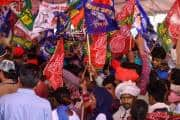
The fourth phase began with a path-breaking election as it elected a government and a Chief Minister (Mayawati), who completed the tenure for the first time in the state. It was followed by Akhilesh Yadav, who became the CM in 2012 and completed his tenure in the CM office.
Talking about the political situation between 2007 and 2017, it began with the consolidation of the core social base of the two major contenders—the BSP and the SP. The two parties walked forward with the consolidation of their core support base amongst Dalits, mainly Jatavs, and OBCs, mainly Yadavs, shoring up vote plurality at the constituency level along with the support of Brahmins, Thakurs, non-Yadav OBCs and Muslims. This resulted in single-party majority (SPM) governments in the state by both BSP and SP in 2007 and 2012, respectively.
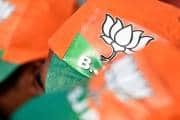
Riding on the Modi wave in the 2014 parliamentary elections, the BJP had won a whopping 71 out of 78 seats contested by the party and had won 52 seats with greater than 40 percent vote share.
Against this backdrop, both the SP and BSP were seemed incapable to take on the resurgent BJP on their own in the 2017 assembly elections. In this situation, the only viable option for both the SP and BSP to take on the BJP-led NDA would have been to forge a Bihar-like grand alliance with the. The move would have been politically right as well given the combined vote share of the SP, BSP and Congress in the 2014 general elections was 49.6 percent. However, the alliance was difficult to achieve not only due to the incompatible social support base of the SP and the BSP, but also the history of the sour relationship between the parties dates back to 1995 when in the so-called “guesthouse incident” several BSP legislators including their leader Mayawati were reportedly attacked by SP workers.
The SP and Congress formed an electoral alliance, which failed to form the government and ended up with just 54 seats together, while the BSP scored 19 seats only.
The BJP, emerged victorious, bagging 312 seats while its allies Apna Dal and Suheldev Bharatiya Samaj Party (SBSP) won nine and four seats, respectively.
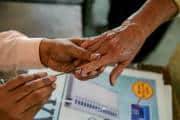
The stage has been set for the upcoming state elections. The ruling National Democratic Alliance (NDA) will leave no stone unturned to gain the second consecutive term in the state while its two big opposition parties – SP and BSP – will make effort to get the throne.
In the present situation, it appears that the state election will be somehow similar to 2017, with the BJP maintaining the lead and the SP being a distant second. In the run-up to the polls, there are reports of personality clashes within the party and alliances. For instance, SBSP chief Om Prakash Rajbhar has said he will not enter into an alliance with the BJP if the saffron party decides to contest the polls under Adityanath’s leadership. But what will be the consequences, only time can tell.
Meanwhile, take a look at key points ahead of the 2022 Assembly polls:
Anti-incumbency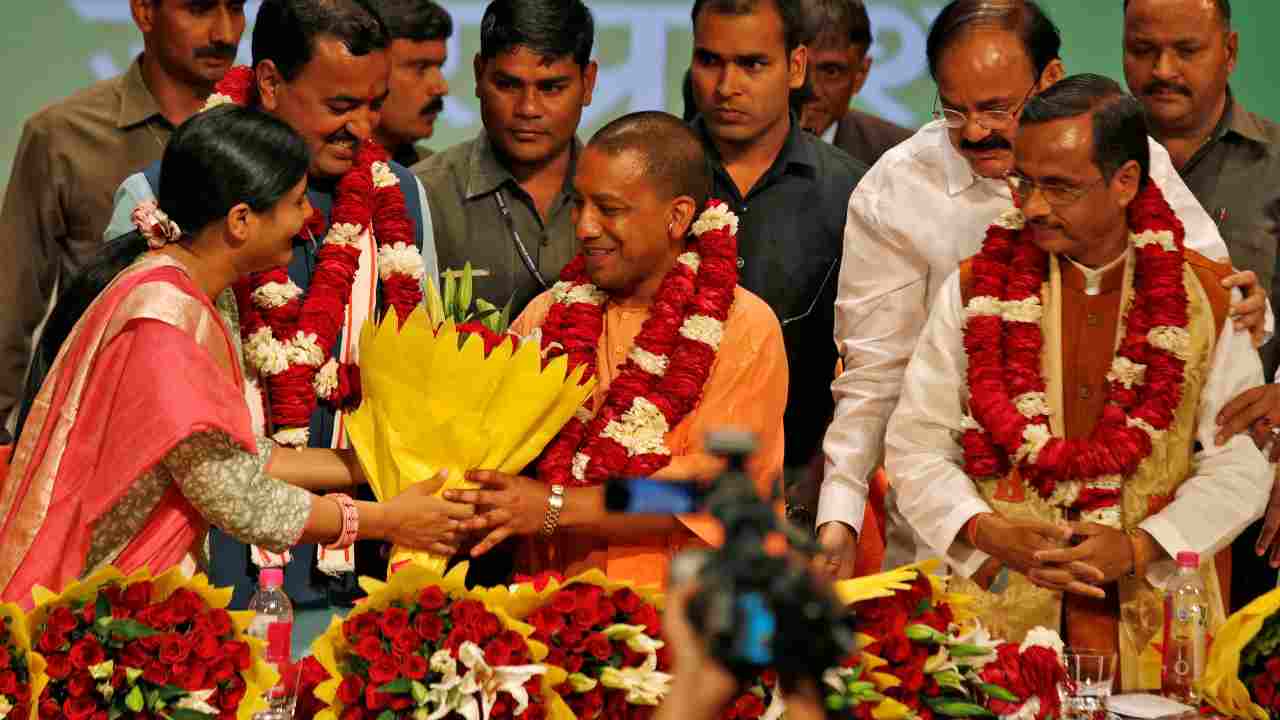 Bharatiya Janata Party (BJP) leader Yogi Adityanath (C) is greeted after he was elected as Chief Minister of India’s most populous state of Uttar Pradesh, during the party lawmakers' meeting in Lucknow on March 18, 2017. (Image: Reuters)
Bharatiya Janata Party (BJP) leader Yogi Adityanath (C) is greeted after he was elected as Chief Minister of India’s most populous state of Uttar Pradesh, during the party lawmakers' meeting in Lucknow on March 18, 2017. (Image: Reuters)Incumbency refers to the period during which an official holds office and anti-incumbency is sentiment to vote out the ruling parties or politicians. So, is there anti-incumbency in Uttar Pradesh? The BJP says no while the Opposition narrates a different story.
“The people of Uttar Pradesh are happy with the welfare work of CM Yogi Adityanath and Prime Minister Narendra Modi in the state. In the last 4.5 years, the state government has brought development to the state ranging from infrastructure, investment, education, law and order, women safety, health care facilities and more. The people are very well aware of this and are ready to vote in favour of the ruling government,” Dhirendra Singh, BJP MLA from Jewar – Greater Noida, told Moneycontrol.
On the other hand, the SP, fighting the polls under former CM Akhilesh Yadav, claims there is anti-incumbency among the farmers of the state and they will vote unitedly against the BJP in the next state polls.
"It is heard that the BJP, which cultivates talks, will hold a 'Kisan Sammelan' in Uttar Pradesh. When the time has come for the 'Annadata' to become a voter, the BJP remembered farmers. Farmers are not going to fall in the trap of the BJP. In 2022, farmers will vote unitedly against the BJP," Yadav has said.
In a press conference on August 7 in Lucknow, he said the BJP had promised that farmers' income will be doubled by 2022 but it looks improbable. "The farmers and the people of Uttar Pradesh want to know from the BJP what the farmers' income today is? Today, there is price rise, and the prices of fertiliser have also gone up. The promise was made to double the income of the farmers by 2022. When will this happen?" he asked.
While the SP talks about farmers’ protest against the three laws, the Congress is raising its voice against the tackling of second COVID-19 wave in the state. “The people are angry with the government due to its mismanagement during the second wave of COVID-19 pandemic, in which people died due to lack of oxygen, beds and healthcare facilities in the state. They have not forgotten this and it will be seen in the upcoming elections,” senior Congress leader Ajay Rai told Moneycontrol.
However, psephologists thought the other way. “The base of anti-incumbency depends on the leadership. If a leader is working for the people then such a situation does not arise and vice versa. In UP, there is anti-incumbency but prima facie it is not on the level when a government with a high majority fails to retain the power," said Kaushal Kishor Mishra, a professor at the Department of Political Science in Banaras Hindu University.

Many groups of farmers are protesting against the three farm acts which were passed by the Parliament in September 2020. The government has been projecting the three farm laws as major reforms in the agriculture sector that will remove middlemen and allow farmers to sell anywhere in the country. However, the protesting farmers have expressed apprehension that the new laws would pave the way for eliminating the safety cushion of Minimum Support Price (MSP) and do away with the mandis, leaving them at the mercy of big corporates.
Will the heat of these protests will singe the 2022 state polls. The Opposition says yes but the BJP begs to differ.
“PM Modi has done a lot for the farmers’ welfare including acting upon Swaminathan Commission’s report and raising the MSPs. The reason a group of farmers are protesting against the Centre for the introduction of three farm laws is because of the middlemen who have provoked the farmers because of their self-interest,” Singh said. “It will not impact the election result as the public knows the truth,” he added.
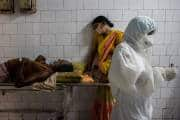
As discussed earlier, the Opposition parties, especially Congress seems to gherao the government on the issue of COVID-19 mismanagement. According to the Union health ministry’s data, more than 17 lakh people have been infected with the novel coronavirus and over 22,000 died. However, Congress leader Ajay Rai claims that the state has seen over a lakh deaths due to the contagion.
MiscellaneousThere are other issues that will grab highlights in the poll hustings, including inflation, crime rate, and law and order situation. "Ever since the BJP government came to power, there has been no move to reduce the sufferings of the people and they have been forced to go through the pain of inflation and crime every day,” Akhilesh Yadav said on August 6.
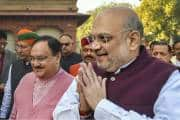
The BJP is hoping to retain the power on the basis of the leadership of CM Yogi Adityanath and the work done by his government. Asked about the main contender of the saffron party, Singh told Moneycontrol, “There is no one in front of the BJP. The CM has worked tirelessly for the welfare of people and the public will return the favour by voting for the party in the coming elections.”
The SP is claiming that his party and its ally, Mahaan Dal, will come back in power in Uttar Pradesh in 2022 by winning 400 seats. "When I talk about (winning) 400 seats, people start raising questions. But, when the BJP talks about the bullet train, no one questions it,” Yadav said on August 8.
He has resumed his tour of the state ahead of the polls. The backward class cell of the party is also holding 'pichhdha varg sammelan' in different districts of the state from August 9 (August Kranti Diwas).
The BSP has been performing very poorly, of late. In the 2012 assembly elections, the party had been reduced to 80 seats from 206 in 2007, and bagged just 19 seats in 2017. It will now contest the 2022 elections as a do-or-die situation. The party is straining every nerve for the UP assembly election and has been aggressively hitting out at the ruling BJP, the Congress, as well as the SP – its ally in 2019 Lok Sabha polls. The idea seems to amplify the message that the BSP is a prime contender in the upcoming polls.
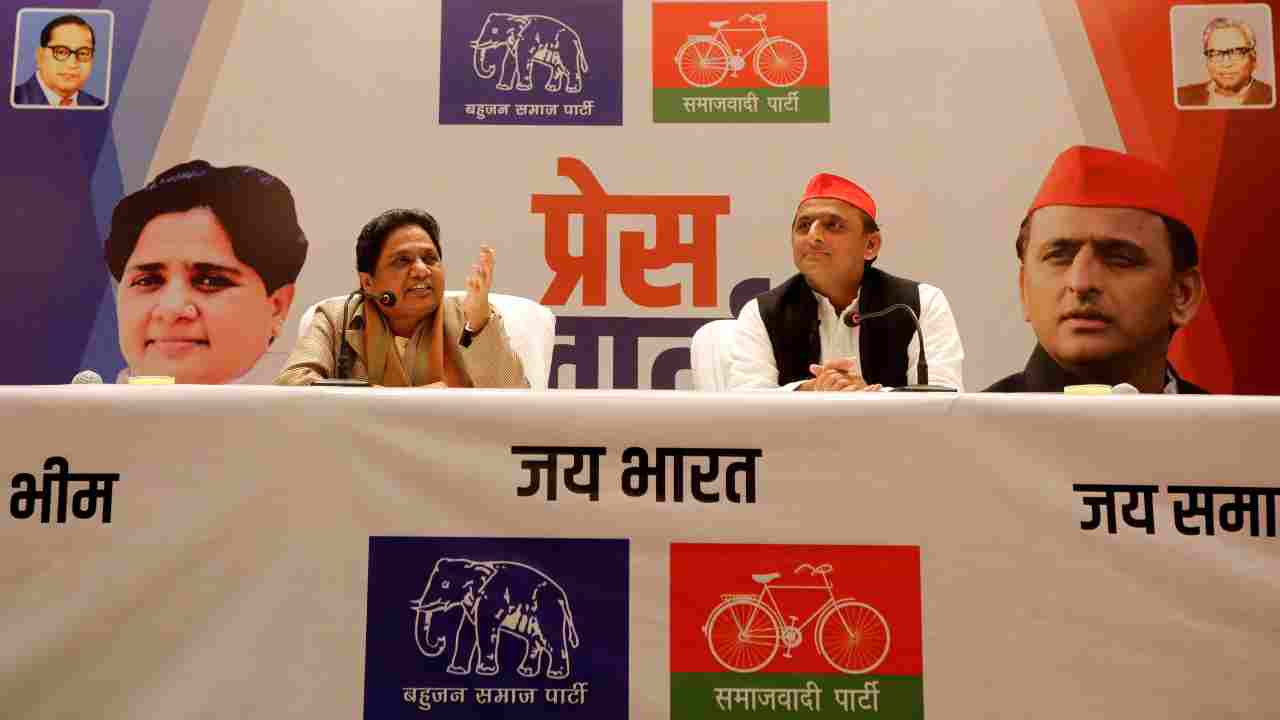 The Bahujan Samaj Party (BSP) chief Mayawati (L) speaks as Akhilesh Yadav, chief of Samajwadi Party (SP), looks on during a joint news conference to announce their alliance for the upcoming national election, in Lucknow on January 12, 2019. (Image: Reuters)
The Bahujan Samaj Party (BSP) chief Mayawati (L) speaks as Akhilesh Yadav, chief of Samajwadi Party (SP), looks on during a joint news conference to announce their alliance for the upcoming national election, in Lucknow on January 12, 2019. (Image: Reuters)The Congress is depending on the leadership of Priyanka Gandhi Vadra, who faces the uphill task of reviving a near defunct party. The party has constituted the election committee for Uttar Pradesh, which includes state unit chief Ajay Kumar Lallu and former Union ministers Salman Khurshid, Rajeev Shukla and RPN Singh.
According to Rai, the Congress would fight the polls in Uttar Pradesh under Priyanka Gandhi Vadra's supervision and would make a comeback in the state after over three decades. Rai also said that the party leaders in the state are advocating Priyanka Gandhi to fight the upcoming elections as the chief ministerial candidate.
However, Professor Mishra thinks otherwise. “The Opposition is raising the issues on the party level. They are not actively coming in the middle of the public and running a movement against the wrongdoings, if any, of the incumbent government. On the other hand, CM Adityanath is interacting with the public at large and listening to them on a regular basis. To win polls, it is important to connect with the people. However, there is still time and whoever would be able to convince the voters, will form the government,” he concluded.
Read more weekly in-depth articles from Moneycontrol here